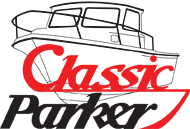From Center Console Angler: Taliking about Windlesses
Next you must consider your choice of rode and chain. Three-strand nylon is undoubtedly the most common choice in anchor rodes because it’s cheap, it’s strong, and it’s resistant to abrasion, but it may not be the best choice when using a windlass and gypsy. Three-strand nylon gets stiff when used in salt water, and it tends to kink when you try to lay it into a locker, forming loops known as “hockles.” These hockles jam windlasses when deploying and retrieving the anchor, causing unnecessary headaches, plus three-strand needs about 16 inches of “fall,” the measurement of open space between the top of the anchor locker and the top of the pile of rode, to work well.
To combat these problems, many manufacturers recommend using “8-Plait” line, a tighter weave that resists kinking and coils much more easily. A recent document from Lewmar touting the virtues of 8-Plait lists the following advantages:
* 8-Plait will not get stiff when used in salt water.
* 8-Plait will fall into the locker as long as there is a clear and free space under the hawse pipe.
* 8-Plait will not get stiff enough to where the line wants to stand up and not enter the locker.
* 8-Plait will not loop over on itself and creates loops or hockles.
* 8-Plait is 30 percent more effective in smaller lockers.
* 8-Plait requires only 8 to 10 inches of fall to work properly in a hands-free operation.
It’s important to point out that the rode must always be tied off to a cleat when the boat is anchored, relieving pressure on the windlass and preventing damage to the rode. If you let the weight of the boat ride on the rode as it comes out of the windlass, the rode can be pulled tight into the gypsy and cut. Windlasses aren’t made to hold the boat while at anchor.


























